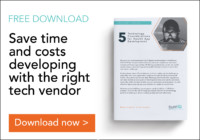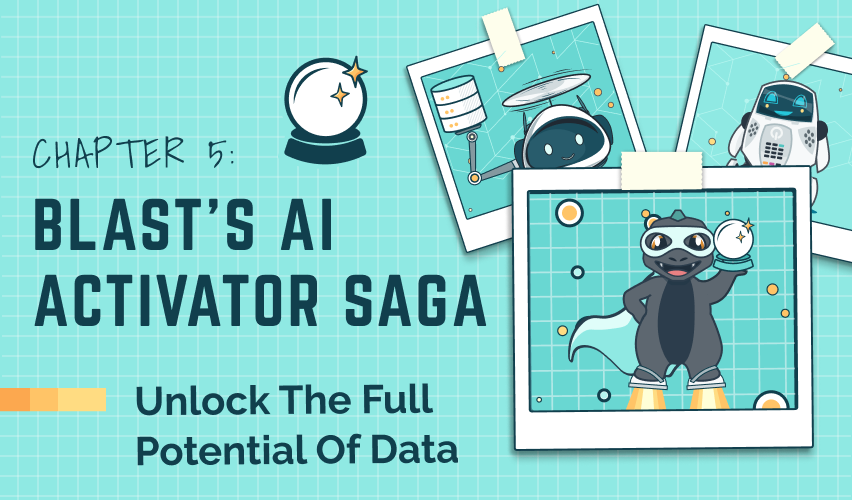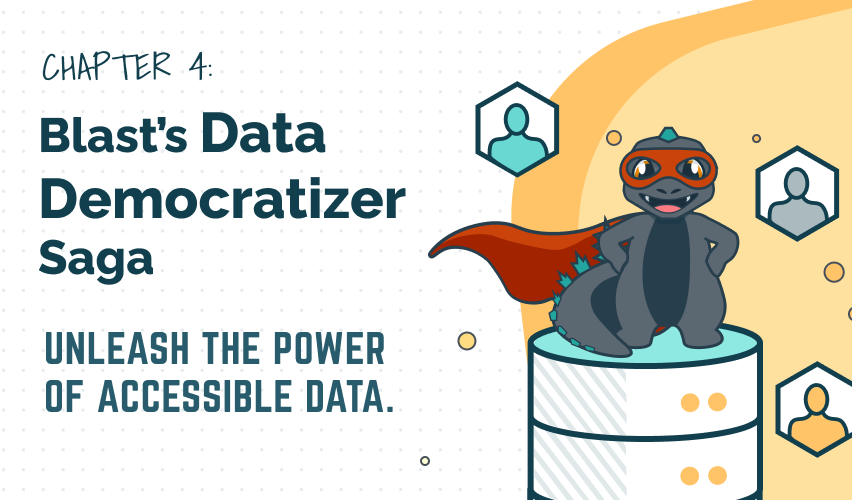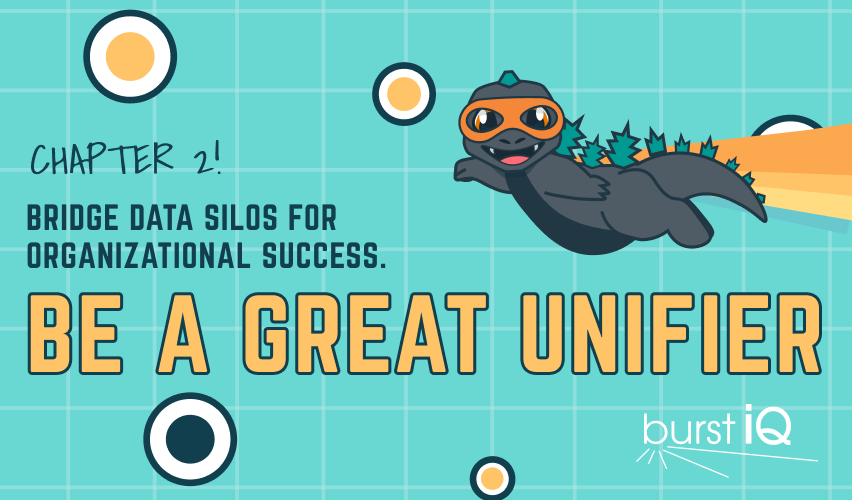Knowledge Burst Blog Series
Trust as a differentiator: Protecting human data in your products and services | BurstIQ
By Amber Hartley, Chief Strategy Officer, BurstIQ
Did you catch our last Knowledge Burst, How can BurstIQ help you build your trust and improve patient satisfaction by protecting human health data? The post discussed how people are becoming increasingly wary of businesses that don’t safely handle and protect their personal data. Investing in blockchain-based decentralized networks is an excellent first step to building trust with your employees, customers, and patients. But, as a data-driven company, you can’t stop there. You have to change how you communicate and use trust as a true competitive advantage.
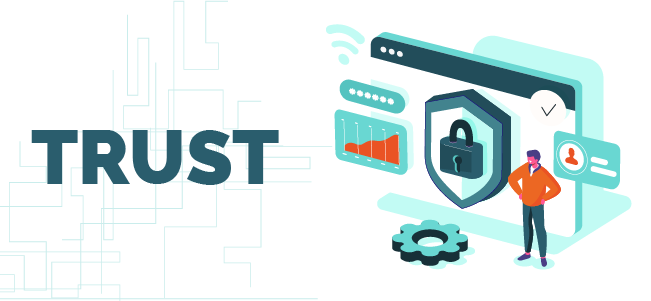
Data privacy is more than skin deep
As consumers, we see the efforts businesses take in order to prove our data is protected. We click on cookies on every website and navigate through complicated privacy and permission pages, flipping switches to dictate how we want the company to use (or not use) our data. And certainly, privacy laws like GDPR and state-level laws such as those in California and Virginia wrap regulatory requirements into this process.
But all of these are just feel-good efforts if as consumers, we have no visibility into what happens after we check that box. How can we know that the company actually follows through on our privacy preferences? The truth is, we can’t. We are forced to accept in good faith that they’ll do what we ask them to do.
The reality of the situation is that once a person selects to restrict what the company does with their data, they have absolutely no way of proving that the company complied. There’s no traceability; no proof that their choices are being enforced.
And while laws and click-thrus may project the idea that our data is safe, regulations and user agreements allow companies to share people’s data for lots of reasons, regardless of what the user chooses in their privacy settings. Companies are great at finding (and creating) loopholes so they can exploit people’s valuable data without violating the law or their user agreements.
People know these loopholes exist; they know companies still control their data. But they don’t know what they don’t know. The perception of privacy on the front end is not matched with privacy and transparency on the backend. Where’s the visibility after they opt-in or opt out of data sharing? Where’s the proof?
Not being able to provide proof that data sharing will be managed as a person chooses is problematic for businesses. Big tech companies have made significant investments in data privacy management services, but they haven’t seen any positive movement toward brand trust. Privacy settings alone do not make a brand trustworthy.
Without proof of data sharing, trust between a person and a company will always be constrained. So how can your company change this? How can you build products and services that don’t just talk a big game about trust, but actually prove they are trustworthy?

What is your strategy to build trust?
According to the Forrester Trust Imperative, a deliberate trust strategy can create new opportunities for businesses willing to invest. At BurstIQ, we feel there are four essential elements every business should include in their trust strategy.


Change the Data Model
Building a trusted product starts with changing how you define and manage your data. Typically, databases are set up such that, functionally, whoever manages the database is the owner of the data. They control how that data is added, modified, and shared.
From a business perspective, this may seem like the most logical way to execute a master data management strategy. After all, you want to make sure your data is accurate and that only authorized people have access to it.
But when you’re dealing with sensitive customer or patient data, this control-based model is no longer adequate. Instead, you need to switch to a distributed data network.
Distributed data networks (such as LifeGraph) change this paradigm. In a distributed model, ownership of the data is separate from the management of the database. In a distributed data model, a company can provide its users with direct ownership of their data – not just cursory control of it. This is an essential first step in building a trusted product and a trusted relationship.
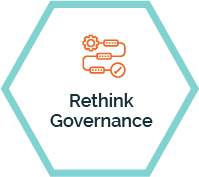
Rethink Governance
Once the data model and metadata are defined to provide people with true ownership of their data, your next step is to rethink your data governance processes.
Data governance is the process of managing how data is structured, accessed, modified, shared, and deleted. It controls data access across your internal subsystems and with external partners and vendors.
Consent is the most individual form of governance. It’s what puts people in the driver’s seat so they can define where their sensitive information is shared and with whom. At BurstIQ, we strongly believe consent should be a foundational element of your data governance model, not simply a feature in your application.
Understanding how to comply with regulatory requirements that apply to your business is critical. Regulations vary based on your product, where your customers (and their data) are located, and the type of data you are managing.
It is equally important to understand the broader context that will contribute to (or detract from) your ability to build trust with your customers. Here are some questions that can help you build a data governance model that respects people’s data dignity.
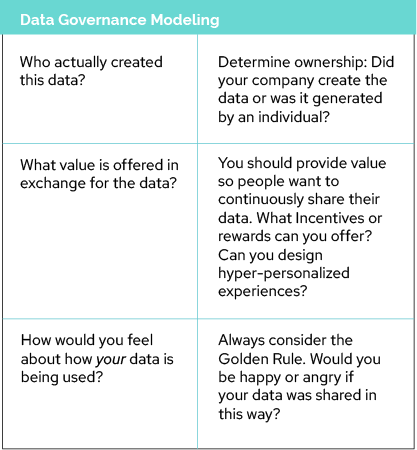
Who actually created this data? Did my company create it, did my enterprise customers create it, or did individual people create it as they used my products or services? This helps you understand who the data owner is.
What value do people get in exchange for giving my company (or my partners) permission to use their data? Is that value enough for them to want to share? Asking this question helps you change your mindset and start seeing people’s data as an asset they own. In this data governance framework, you need to provide people with enough value that they want to share data. That might be financial, but it could also be deeper personalization of your services, incentives or rewards, or other value.
And lastly, use the Golden Rule. If a company were to share my data without my consent in the way our company wants to share people’s data, how would I react? Would I be happy or angry?
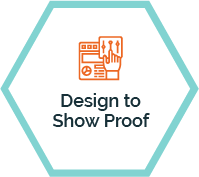
Design to Show Proof
Once you have established a data model and governance structure that prioritizes people’s data dignity, you have the foundation to build products that don’t just pay lip service to trust, they prove it. Now you have the ability to infuse trust throughout your user experience.
As you work through your product design, you should be thoughtful about where you can show proof that people’s data privacy and rights are being enforced.
Offer an interface that allows people to see exactly who has access to their data based on their privacy settings – and let them change it.
Consider showing the underlying data governance in a user-friendly way so people can interact directly with their own data and permissions. Give them tools to prove for themselves that data privacy is being enforced. A user experience designed to elicit trust will reflect positively on your reputation as a trustworthy company.
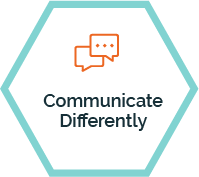
Communicate Differently
Lastly, building trust means changing how you communicate with people. This applies to how you communicate within your products as well as your broader corporate communications. Trust, and being able to provide proof that your product doesn’t just talk the talk, is truly is a competitive differentiator.
As a starting point, recognize that in a distributed Web3 world, human data belongs not to the company, but to the humans who created it. Acknowledging that your company supports Web3 principles in your communications will go a long way towards building trust. It will also help you stand out in a market where everyone claims they are trustworthy without actually showing how they earn customer trust.
Finally, let customers know you have something valuable to offer in exchange for access to their data — it’s a mutually beneficial relationship. This may come in the form of personalized services, the opportunity to participate in medical research, better coordination between services, reductions to their insurance premiums, or the like. Defining and communicating this value is critical to gaining people’s trust – and their willingness to give you access to their data. If you can demonstrate what they get in return, your customers will be more willing to share their data with you.

Act now to differentiate with trust
As we move into a distributed Web3 world, it will become ever more essential that companies take steps to build trusted relationships with people through trustworthy data management.
Data is becoming more distributed and regulations are driving further towards personal data ownership. In response, companies need to start thinking about data not as a company asset, but as a personal asset. Each company has an opportunity to access and use human data – if you build trusted relationships with people and provide them with meaningful value.
Here’s some good news. You can start building your trust equity quickly and cost-effectively with BurstIQ. LifeGraph is the only platform that solves two critical needs: one, the need to unify and share data at scale while ensuring trust, privacy and regulatory compliance, and two, the need to apply distributed AI and gain deep insights across disparate data to create meaningful, hyper-personalized experiences. LifeGraph’s ability to seamlessly solve both means companies can build smarter products that offer greater value to their customers faster.
Let’s talk so you can experience the power of building trust with LifeGraph firsthand.
About BurstIQ
BurstIQ fuels trust-first digital strategies with human data. LifeGraphs® take the complexity out of managing sensitive human data, freeing organizations to build trust through hyper-personalized health, work, and life digital experiences. In an era of data abundance, LifeGraphs promote trust between organizations and the individuals providing data through blockchain-powered governance and consent. The LifeGraph Network provides a single source of truth and an intelligent ecosystem, helping businesses gain a deep understanding of the people they serve. Armed with granular insights, they can deliver more value in digital experiences and make an increasingly digital world more human.
